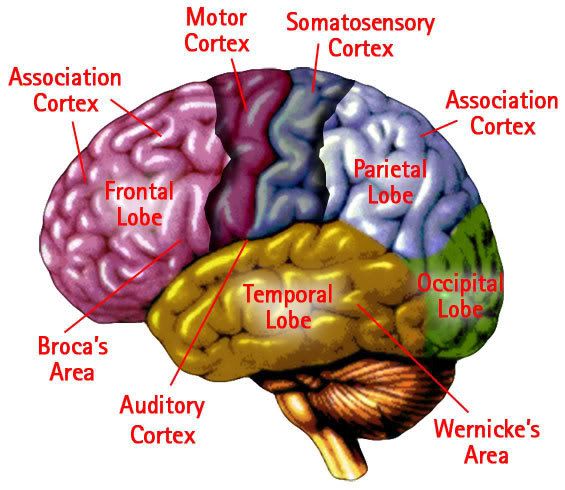Primary somatosensory cortex
From Psy3242
Summary
The primary somatosensory cortex, also referred to as S1, is an area of cerebral cortex devoted to the initial registration of information from sensory receptors all over the body. It occupies the postcentral gyrus and is structured in a way that it involves a topographic map of the body (mapped upside down and contralaterally). Evidence of plastic changes in S1 have demonstrated that, contrary to the idea that the adult brain is hard wired, changes in topographic representation can occur. Topics related to to S1 include:Phantom Limb Syndrome,Vilayanur Ramachandran, and Wilder Penfield
Location
S1 occupies a strip of cortex that runs approximately from ear to ear across the top of the brain, it is the most anterior (forward) gyrus (bump) of the parietal lobe and comprises brodmans areas 3 (a and b) and 1, and 2. It occupies the postcentral gyrus immediately behind the central sulcus of the temporal lobe in both sides of the brain.


Function and Structure
Like other primary zones of a cortex, S1 involves a topographic map of the body and is the primary projection area in which incoming information (in this case touch) is projected to sense modality specific neurons for higher levels of reasoning. Information from skin receptors is sent to the spine in such a way that it creates a map- this map is preserved in S1 where the amount of cortex devoted to receiving sensory information from a specific body part is directly related to the amount of skin receptors relaying information from that area of the body (so the more sensitive a part of the body is the greater amount of space its topographic representation in S1 will be). The body map, or topographic representation, in S1 is distorted in the sense that all body parts are not represented equally(for example, the hands being more sensitive represent more space in S1 than the back) and the body is mapped upside down and left-right reversed along the length of S1. The Homunculus is a visual representation of what a person would look like if the size of their body parts was directly related to their cortical representation. 
Research
While performing surgery on awake patients for the treatment of epilepsy, Wilder Penfield was able to stimulate various parts of the primary somatosensory cortex and ask patients where on their body they felt sensation. Through this practice Penfield was able to map the topographic representation in the primary somatonsensory cortex. Click Here for an Online game of mapping S1 while performing surgery
